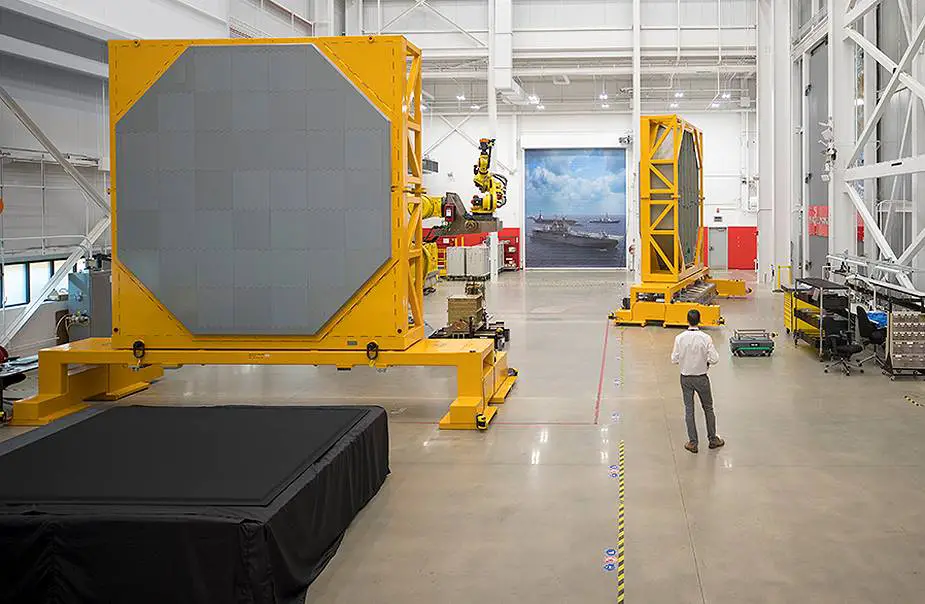According to information released by Raytheon Missiles & Defense on June 1, 2020, the company has completed near-field testing of its new AN/SPY-6(V)1 radar also called SPY-6 for the U.S. Navy. This new radar will offer new capabilities to detect ballistic missiles, cruise missiles, and other threats like aircraft.
Follow Navy Recognition on Google News at this link
 SPY-6 advanced naval radar used to perform air and missile defense on seven classes of ships. (Picture source Twitter account Elma Electronic)
SPY-6 advanced naval radar used to perform air and missile defense on seven classes of ships. (Picture source Twitter account Elma Electronic)
The SPY-6 is a family of advanced naval radars that allow ships to simultaneously detect and counter a host of threats in the air and at sea. It will be used to perform air and missile defense on seven classes of ships. The advanced radar gives operators and commanders more time to react by identifying more threats faster and at farther distances.
The SPY-6 family is integrated, meaning they can defend against ballistic missiles, cruise missiles, hostile aircraft, and surface ships simultaneously. They provide several advantages over legacy radars, including significantly greater detection range, increased sensitivity, and more accurate discrimination.
Raytheon Missiles & Defense, one of four businesses that form Raytheon Technologies, builds the SPY-6 radar and has completed near-field testing on the first 14’x14’ modular array. This latest milestone moves the system one step closer to installation on the Navy’s first Flight III guided-missile destroyer, the USS Jack H. Lucas (DDG-125). The radar will be carried on seven types of Navy ships.
Raytheon Missiles & Defense has nine DDG-51 Arleigh Burke-class destroyers on contract for the SPY-6 program and will build more systems to meet Navy demand.
The company has invested more than $500 million in infrastructure and capacity enhancements for SPY-6, including advanced automation technology at its 30,000 square-foot Radar Development Facility. Construction on expanded production areas for key radar components is expected to be completed in 2020.



